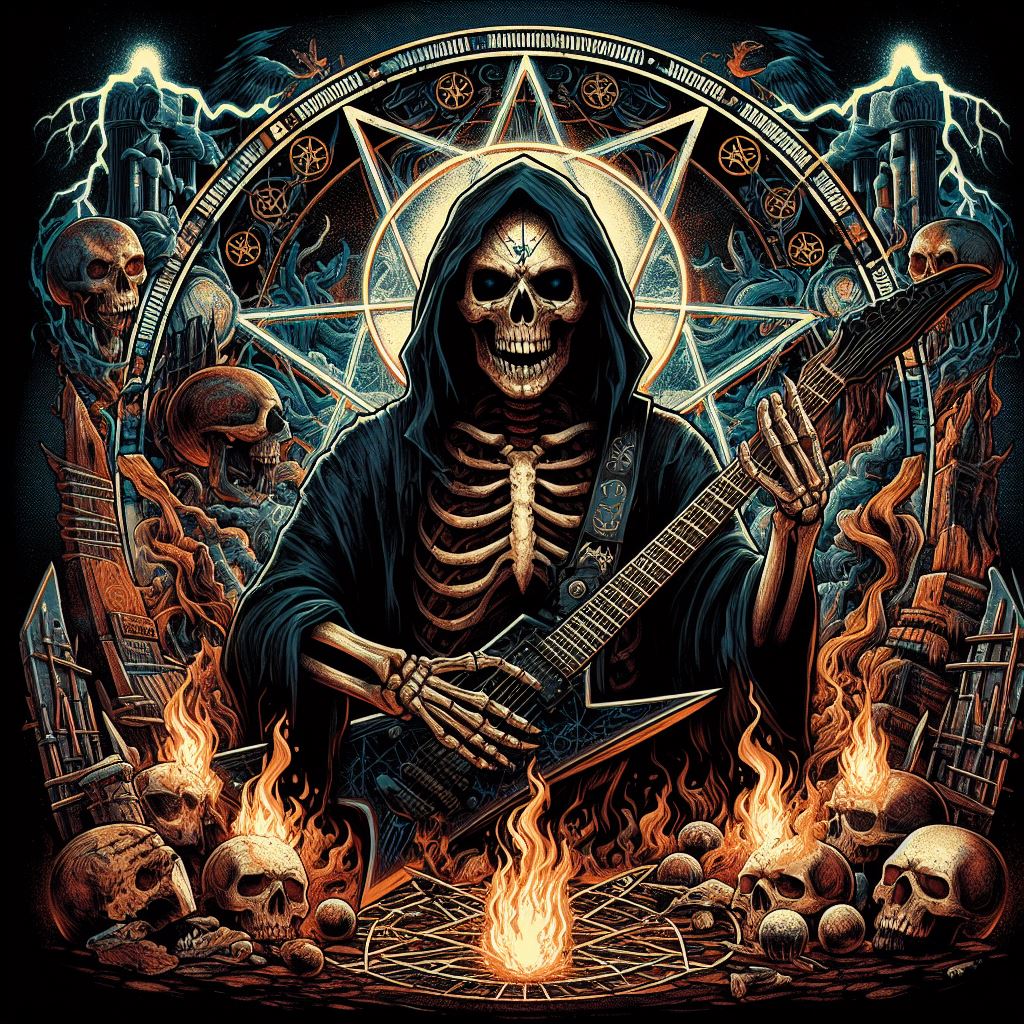Pioneering figures in the German industrial metal scene, particularly the Neue Deutsche Härte (NDH) movement, their music has resonated with audiences for over three decades. This article delves into the band’s rich history, exploring their musical evolution, lineup changes, and enduring legacy.
Formation and Early Days (1993-2002): A Dark Alternative Spark
Megaherz began in 1993 as a musical project spearheaded by Alexx Wesselsky (vocals), Josef Kalleder (bass), Marc Bredtmann (guitars), and Tobias Trinkl (drums). Their self-released 1995 demo, “Herzwerk,” showcased a sound categorized as dark alternative metal. Influences from American bands like Faith No More were evident, but with a uniquely German twist. Songs like “Hänschen klein” (“Little Hans”) hinted at a fascination with dark fairy tales, a theme that would weave its way through their early albums.
The band’s lineup solidified with the addition of Christian “X-ti” Bystron (guitars) and Wenz Weninger (bass) shortly after the “Herzwerk” release. This core group crafted their debut studio album, “Oasis,” released in 1995. “Oasis” marked a shift towards a more industrial sound, incorporating electronic elements alongside their heavy guitars. Tracks like “Mann ohne Gesicht” (“Man Without a Face”) showcased their developing identity, blending aggression with a touch of melody.
Megaherz rose to prominence with their 1997 album, “Kopfschuss” (“Headshot”). This record cemented their place in the burgeoning NDH scene, characterized by its blend of German lyrics, industrial elements, and strong melodies. Singles like “Amok” became anthems, capturing the band’s raw energy and Wesselsky’s charismatic vocals. Songs like “Rapunzel” reimagined classic fairy tales with a dark, industrial twist, further establishing their unique brand of storytelling.
Creative Differences and New Beginnings (2002-2007): A Shift in Leadership
Despite their success, tensions arose within the band. In 2002, Wesselsky left Megaherz due to creative differences. He would later form Eisbrecher, another prominent NDH band, along with Noel Pix (keyboards), a former Megaherz member.
Determined to continue, Megaherz recruited a new vocalist, Mathias Elsholz. This new chapter resulted in the release of “5” in 2004. While commercially successful, the album showcased a shift in style, incorporating more electronic elements and pop sensibilities. The change wasn’t universally embraced by fans who felt it strayed from the band’s earlier industrial roots. Elsholz’s tenure was short-lived, and he departed in 2005.
The Lex Wohnhaas Era and Continued Success (2007-Present): Embracing the Legacy
In 2007, Megaherz found a new frontman in Alexander “Lex” Wohnhaas. Wohnhaas’s arrival marked a return to a more traditional Megaherz sound, evident in their 2008 album, “Heuchler” (“Hypocrite”). The band continued to tour extensively, drawing upon their extensive catalog and re-energizing their fanbase.
Megaherz hasn’t shied away from experimentation in recent years. They released a best-of compilation in 2009 and a remix album in 2010, showcasing the versatility of their music. Their 2012 album, “Götterdämmerung” (“Twilight of the Gods”), proved they could still deliver powerful and innovative industrial metal while staying true to their roots.
In 2018, Megaherz released “Komet” (“Comet”), their most commercially successful album in years. It peaked at #7 on the German charts, solidifying their status as veterans of the NDH scene. Their latest album, “In Teufels Namen” (“In the Devil’s Name”), released in 2023, demonstrates their continued relevance and creative fire.
Beyond the Music: A Legacy of Industrial Might
Megaherz’s impact extends beyond music. Their dark imagery and theatrical live shows have captivated audiences for years. Their exploration of German folklore and fairy tales within their music adds a unique cultural layer to their sound.
Despite lineup changes and stylistic evolutions, Megaherz remains a cornerstone of the NDH movement. Their music continues to resonate with fans seeking a blend of industrial aggression, catchy melodies, and a touch of the macabre.

Leave a Reply
You must be logged in to post a comment.